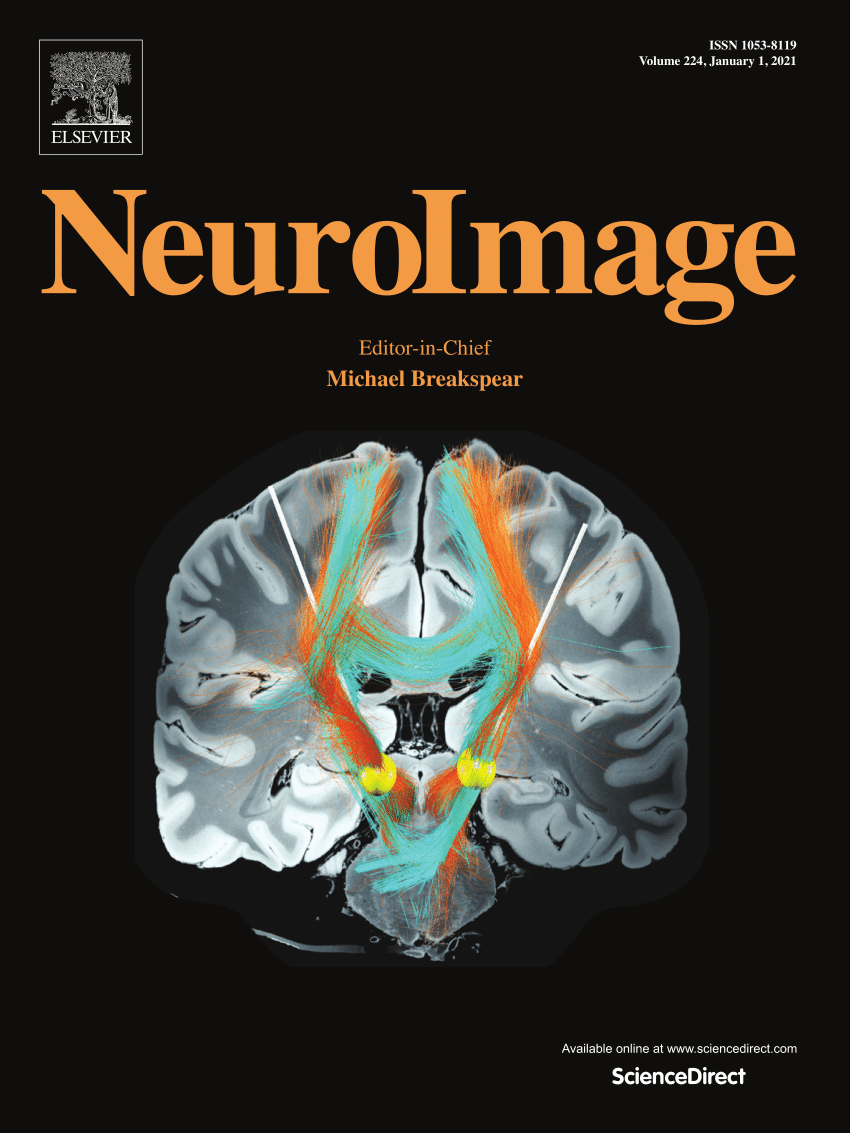MQGA: A quantitative analysis of brain network hubs using multi-graph theoretical indices
IF 4.7
2区 医学
Q1 NEUROIMAGING
引用次数: 0
Abstract
Recent advancements in large-scale network studies have shown that connector hubs and provincial hubs are vital for coordinating complex cognitive tasks by facilitating information transfer between and within specialized modules. However, current methods for identifying these hubs often lack standardized measurement criteria, hindering quantitative analysis. This study proposes a novel computational method utilizing multi-graph theoretical index calculations to quantitatively analyze hub attributes in brain networks. Using benchmark network, random simulation network (N = 100), resting fMRI data from the ADHD-200 NYU dataset (HC = 110, ADHD = 146), and the Peking dataset (HC = 120, ADHD = 83), we introduce the Multi-criteria Quantitative Graph Analysis (MQGA) method, which employs betweenness centrality, degree centrality, and participation coefficient to determine the connector (con) hub index and provincial (pro) hub index. The method's accuracy, reliability, and stability were validated through correlation analysis of hub indices and labels, vulnerability tests, and consistency analysis across subjects. Results indicate that as network sparsity increases, the con hub index increases while the pro hub index decreases, with the optimal hub node index at 4 % sparsity. Vulnerability tests revealed that removing con nodes had a greater impact on network integrity than removing pro nodes. Both con and pro exhibited stability in consistency analyses, but con was more stable. The stability of hub scores in disease groups was significantly lower than in the healthy control group. High con values were found in the precuneus, postcentral gyrus, and precentral gyrus, whereas high pro values were identified in the precentral gyrus, postcentral gyrus, superior parietal lobule, precuneus, and superior temporal gyrus. This approach enhances the accuracy and sensitivity of hub node identification, facilitating precise comparisons and producing consistent, replicable results, advancing our understanding of brain network hub nodes, their roles in cognitive processes, and their implications for brain disease research.
MQGA:利用多图理论指数对大脑网络枢纽进行定量分析。
大规模网络研究的最新进展表明,连接器枢纽和省枢纽通过促进专门模块之间和内部的信息传递,对于协调复杂的认知任务至关重要。然而,目前识别这些枢纽的方法往往缺乏标准化的测量标准,从而阻碍了定量分析。本研究提出了一种新颖的计算方法,利用多图论指数计算来定量分析大脑网络中的枢纽属性。利用基准网络、随机模拟网络(N = 100)、ADHD-200 纽约大学数据集(HC = 110,ADHD = 146)和北京数据集(HC = 120,ADHD = 83)的静息 fMRI 数据,我们介绍了多标准定量图分析(MQGA)方法,该方法利用间度中心性、度中心性和参与系数来确定连接器(con)枢纽指数和省(pro)枢纽指数。该方法的准确性、可靠性和稳定性通过集线器指数和标签的相关性分析、易损性测试和跨受试者的一致性分析得到了验证。结果表明,随着网络稀疏度的增加,省中心指数(con hub index)增加,而省中心指数(pro hub index)减少,在稀疏度为 4% 时达到最佳中心节点指数。脆弱性测试表明,移除 con 节点比移除 pro 节点对网络完整性的影响更大。在一致性分析中,Con 和 Pro 都表现出稳定性,但 Con 更稳定。疾病组的 hub 分数稳定性明显低于健康对照组。在楔前回、中央后回和中央前回发现了高 con 值,而在中央前回、中央后回、顶叶上小叶、楔前回和颞上回发现了高 pro 值。这种方法提高了中枢节点识别的准确性和灵敏度,有助于进行精确比较,并产生一致的、可复制的结果,从而推进我们对大脑网络中枢节点、它们在认知过程中的作用以及它们对大脑疾病研究的影响的理解。
本文章由计算机程序翻译,如有差异,请以英文原文为准。
求助全文
约1分钟内获得全文
求助全文
来源期刊

NeuroImage
医学-核医学
CiteScore
11.30
自引率
10.50%
发文量
809
审稿时长
63 days
期刊介绍:
NeuroImage, a Journal of Brain Function provides a vehicle for communicating important advances in acquiring, analyzing, and modelling neuroimaging data and in applying these techniques to the study of structure-function and brain-behavior relationships. Though the emphasis is on the macroscopic level of human brain organization, meso-and microscopic neuroimaging across all species will be considered if informative for understanding the aforementioned relationships.
 求助内容:
求助内容: 应助结果提醒方式:
应助结果提醒方式:


